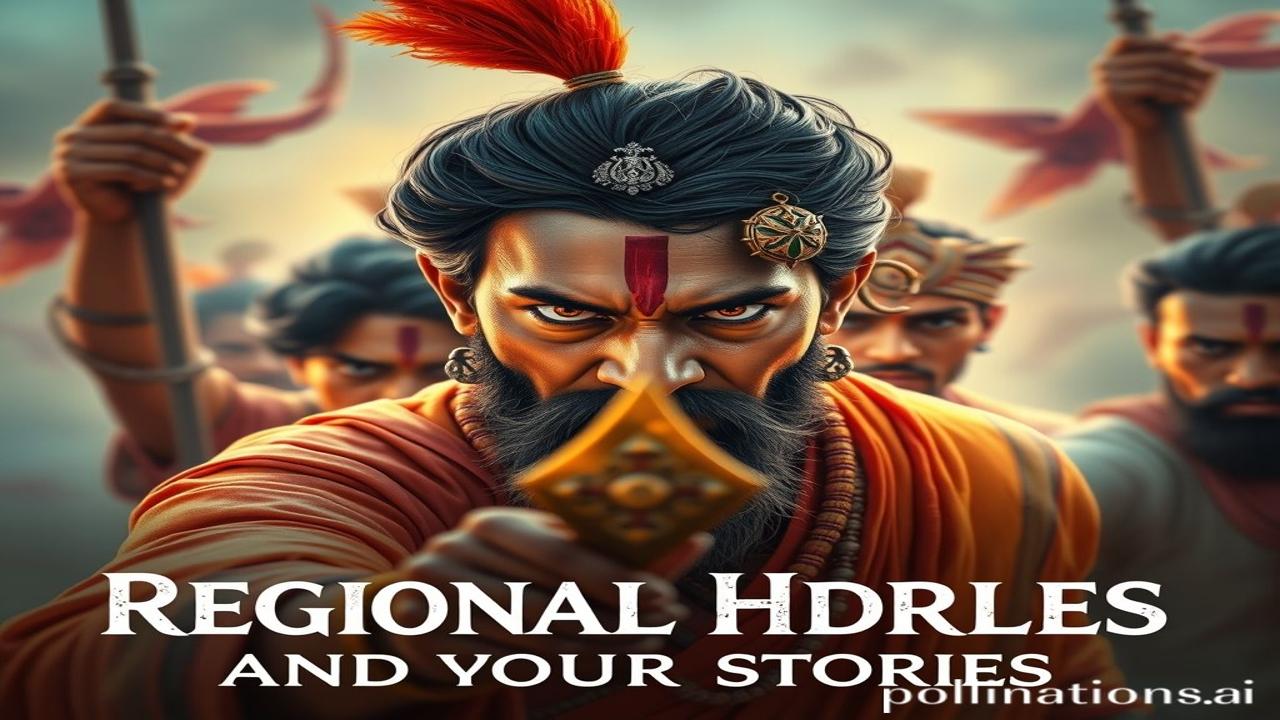Dastaan-e-Virasat: Unsung Folk Heroes and Their Echoes in India
Kabhi kabhi lagta hai, jaise purani haveliyon ke kone mein, ya peepal ke ped ke neeche, kuch kahaniyaan so rahi hain. Stories whispering secrets about brave hearts, forgotten warriors, and ordinary people who rose to extraordinary heights. Unki baatein, unke jazbe, unke balidan…sab dhool mein lipte hue, lekin dil mein zinda. Let’s dust off those tales and rediscover our regional folk heroes.
Regional Folk Heroes: Who Were They?
Regional folk heroes, yaar, they weren’t your textbook “mahan samrat” types. These were the apne log, the ones who lived amongst us, fought for us, and often, died for us. They emerged from specific regions, representing the unique cultural identity, struggles, and aspirations of their people. Think of them as the local superheroes, desi style.
They might have been warriors defending their village from invaders, rebel leaders fighting against injustice, or even spiritual guides showing the path of righteousness. Their stories often blend fact and legend, passed down through generations in the form of ballads, folk songs, and oral narratives. Yeh kahaniyan, dates and facts se zyaada, bhavnao aur prerna ka ek zariya hai.
Bharat Ki Zameen: The Stage for Their Valor
Imagine, for a moment, a vibrant scene in Rajasthan sometime in the 14th century. Harsh sunlight glinting off the sand dunes, the rhythmic beat of dhol echoing in the air, and the smell of spices wafting from bustling markets. This was the world of Pabuji Rathore, a legendary Rajput warrior revered as a folk deity.
Pabuji wasn’t just any raja; he was a protector of cows and the downtrodden. Legend has it he sacrificed his own wedding to rescue stolen cows from a band of marauders. Talk about dedication! His bravery and selflessness made him a symbol of courage and compassion in Rajasthan. Even today, his exploits are sung by bhopas (wandering bards) across the region, keeping his memory alive.
Then there’s the tale of Birsa Munda from Jharkhand in the late 19th century. Picture dense forests, the rhythmic chants of tribal communities, and the growing resentment against British colonial rule. Birsa Munda, a young tribal leader, rose up to fight against the exploitation of his people. He became a symbol of resistance and a beacon of hope for the oppressed.
“Hum apni zameen ko bachayenge!” he would declare, his voice echoing through the forests. His rebellion, though ultimately suppressed, ignited a spark of freedom and continues to inspire movements for tribal rights even today.
Zameeni Sach: Jeevan Aur Jung
Let’s step into the shoes of these heroes.
Imagine Pabuji Rathore preparing for his wedding, the aroma of sandalwood and incense filling the air. His bride, decked in finery, awaits him. But then, a messenger arrives, pleading for help. Cows are being stolen, innocent lives are in danger. In a heartbeat, Pabuji makes his decision. He leaves his wedding, vows to return only after rescuing the cows, and rides off into the setting sun.
Or picture Birsa Munda, sitting under a tree with his fellow tribesmen, discussing strategies to resist the British. They’re armed with bows and arrows, their hearts filled with determination. “Hum apni zameen, apni Sanskriti, apni pahchan ko bachayenge,” he tells them, his eyes burning with passion.
These weren’t just stories; they were real lives, filled with courage, sacrifice, and unwavering commitment to their people.
Dharohar Aur Pehchan: Echoes of the Past
Today, we see their echoes in various forms. Pabuji’s story is still alive in the folk songs and paintings of Rajasthan. Birsa Munda is remembered in statues, schools, and universities named after him. Their legacy inspires us to fight for what is right, to stand up for the oppressed, and to protect our cultural heritage.
Their stories remind us of the Bharatiyata that runs deep within us – a spirit of selflessness, courage, and unwavering belief in justice. They are a testament to the fact that heroism isn’t confined to kings and emperors; it resides in the hearts of ordinary people who dare to make a difference.
Fun Fact Ya Bhram-Bhanjak
Many people believe that folk heroes are simply fictional characters. However, while their stories may be embellished with legend, they are often based on real historical figures who lived and fought for their communities. The lines between fact and fiction blur, creating powerful narratives that resonate with the collective memory of a region.
Drishya Aur Bhavnaen: Painting a Picture
Imagine the smell of sandalwood and burning incense filling the air during a Pabuji Rathore mela. The rhythmic beat of drums and the chants of bhopas transport you back in time. You can almost see Pabuji riding his horse, ready to confront any danger.
Or picture the dense forests of Jharkhand, the air thick with humidity. You can hear the chirping of birds and the rustling of leaves. You can feel the earth beneath your feet and the unwavering spirit of Birsa Munda in the air.
These aren’t just images; they’re sensory experiences that connect us to the past, reminding us of the rich tapestry of Indian history and culture.
Antim Vichar Ya Uddharan
“Yada yada hi dharmasya glanir bhavati bharata,
Abhyutthanam adharmasya tadatmanam srijamyaham.”
(Whenever there is a decline in righteousness and an increase in unrighteousness, O Arjuna, at that time I manifest Myself.)
This shloka, often quoted in times of crisis, reminds us that heroes emerge when they are needed most. The stories of regional folk heroes are not just tales of the past; they are a source of inspiration for the present and a reminder that even in the darkest of times, the spirit of courage and selflessness can shine through. And that, my friends, is a truly powerful legacy.
